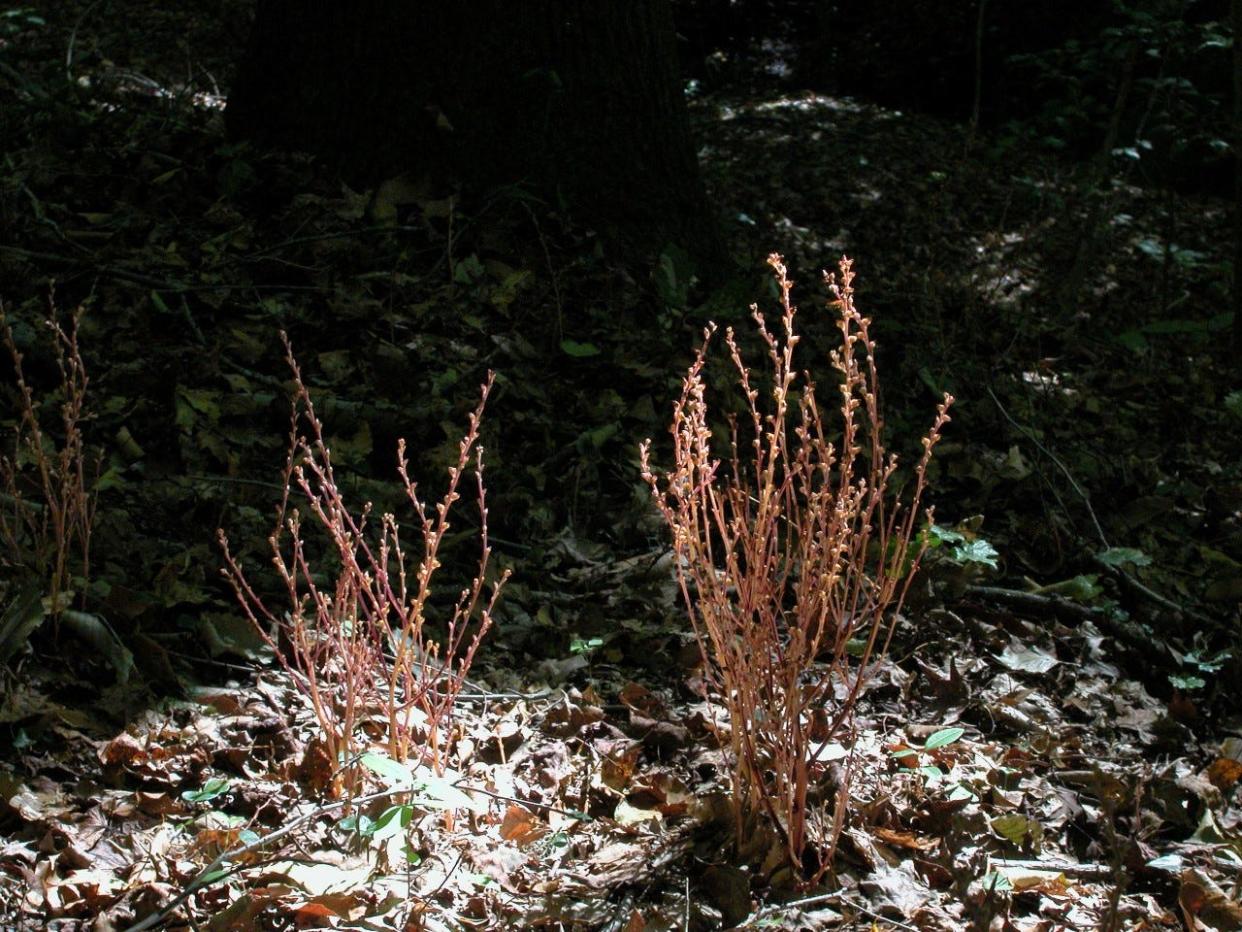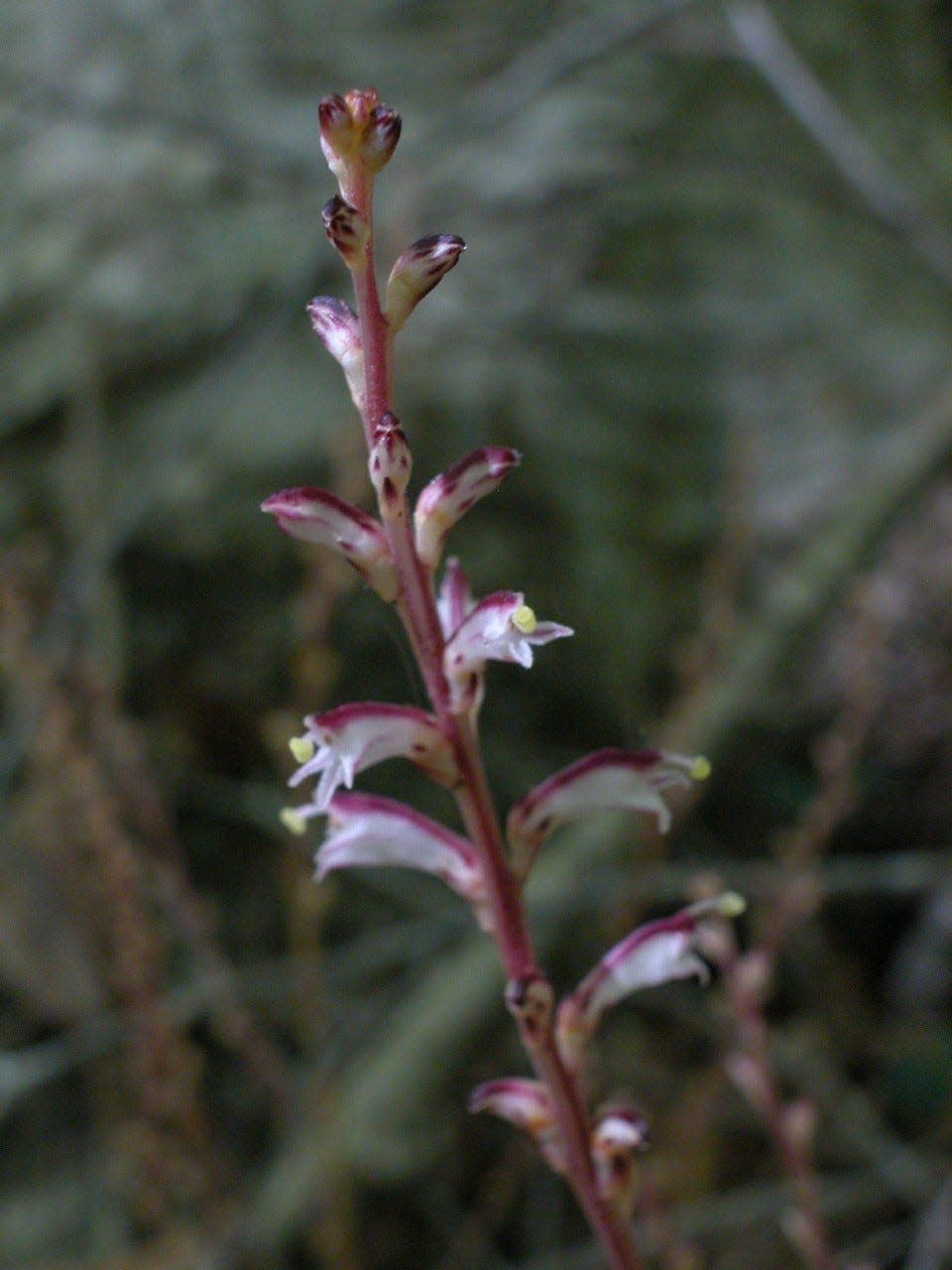Parasitic beechdrops fussy about its host, but does no harm | Mystery Plant

Great fleas have little fleas upon their backs to bite ’em,
And little fleas have lesser fleas, and so ad infinitum.
— Augustus De Morgan
Parasitism: Perhaps it isn’t so bad. After all, parasites go where you go, and they eat what you eat.
Parasites, whether internal or external, are usually associated with animals. Their interaction is one in which the parasite benefits from being in or on its host (human, in many cases), to the detriment of the host.
Plants are not usually thought of as being parasites, or being parasitized, but of course, there are some really good examples. Nearly all plant parasites lack chlorophyll, thus not appearing green, and so depend on obtaining nutrients from their plant host in order to survive and reproduce. Parasitism has evolved several times in the plant world, as there are several totally unrelated flowering plant families that exhibit it.
Mystery Plant: This edible tuber has 'roots' in Caribbean nations
Magnolia man: Spotlight on Tallahassee expert and researcher Gary Knox
Many plant parasites are obligate, unable to survive without being attached to a host only, while others are “facultative” — able to reproduce without constant contact with a host. And, some of these plant parasites are not choosy about their host. Various species of “dodder” (genus Cuscuta), looking like spaghetti flung out of a car window onto roadside vegetation, can be attached to just about anything.

Then there is “witchweed” (Striga asiatica), a non-native introduction that caused tremendous damage to Southern corn, sorghum and rice crops back in the 1950s. Mistletoe, being an exception to the no-chlorophyll rule, grows on a variety of hardwood tree species.
Other plant parasites are very fussy about their host plant. Here’s one: beechdrops (Epifagus virginiana).
It parasitizes beech trees (Fagus grandiflora), and nothing else, and is native only to North America, and wherever beech trees grow, from southern Canada to northern Florida, and then eastern Texas. Beechdrops are commonly overlooked by hikers, since they often resemble just a little cluster of dried sticks, pale brown or tan, or even a bit pink, coming out of the ground.
This is an annual species, sprouting from seed, quickly attaching itself to the roots of a beech tree. There really is no “stem” coming out of the ground. The stick-looking things are technically the stalks holding up the flowers, with the leaves reduced to puny and vestigial scales, not needed for photosynthesis.
Just because it’s a parasite doesn’t mean it can’t produce flowers. Beechdrops start blooming about now — in mid- to late summer — through the fall. Some of the little flowers will remain closed, self-pollinating. These flowers make the seeds. Other flowers are open, with attractive and colorful (pink to yellow) parts, but these flowers are sterile, or only make pollen.
To see the flowers, you’ll need to get down on your hands and knees, and for a really good luck, pull out your trusty old hand lens. Small capsules will eventually ripen and break open, releasing another crop of seeds. The little plant dies and dries up, turning black, looking even more stick-y through the winter.
Whether by plant or animal, parasitism seems rather gruesome, and commonly can severely affect the health of a host. Not to fear in our case, though. Our Mystery Plant, though a parasite, doesn’t seem to harm its beech tree at all.

John Nelson is the retired curator of the A.C. Moore Herbarium at the University of South Carolina in Columbia, S.C. As a public service, the Herbarium offers free plant identifications. For more information, visit www.herbarium.org or email johnbnelson@sc.rr.com.
This article originally appeared on Tallahassee Democrat: Beechdrops need beech trees to survive, but seem to do no harm

